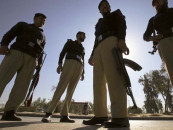Afghan refugee girls: Child marriages stifling education plans, says UN report
Refugee children are five times more likely to be out of school than non-refugees

Refugee children are five times more likely to be out of school than non-refugees. PHOTO: REUTERS
Many girls are taken out of school to be married, as early as grade six and dropout rates for refugee girls are as high as 90%, states a recent UN report.
Bill aiming to ban child marriages shot down
On an average, 43% of children are enrolled in primary schools, but only 5% are enrolled in secondary schools.
According to the policy paper, Pakistan, along with Kenya and Bangladesh, is among the three countries where less than 5% of adolescents aged between 12 and 17 were enrolled in secondary education. “In many refugee camps, secondary education services meet a tiny fraction of the demand.”
The paper states access to secondary education is particularly limited for refugees in many countries. “Some of these host countries have weak education systems and limited capacity to support new populations. Moreover, refugees are often concentrated in the most educationally deprived regions of host countries.”
Globally, girls and women tend to be out of school at higher rates and have lower literacy rates than boys and men of comparable ages.
The paper pointed out that compared with Pakistan, the situation was far graver in Afghanistan where literacy rates tended to be lower among IDP women: only 1% of the IDP women living in urban centres in Afghanistan were found to be literate versus 20% of IDP men.
Data collected by UNHCR suggests that Pakistan continues to host over 1.5 million refugees and manages one of the largest refugee-hosting operation. More than 20% of Afghan refugee population in Pakistan is estimated to be under-age girls. As many as 62% of the refugees are based in Khyber Pakhtunkhwa, 19% in Balochistan, 11% in Punjab, 2% in Islamabad, 1% in FATA and 0.2% in Azad Kashmir.
Combatting the menace of child marriages
“The complex educational needs of people forced to flee their homes are being neglected, compromising the future of entire generations: refugee children are five times more likely to be out of school than non-refugees,” the joint policy paper states.
Last month, Unesco’s Global Education Monitoring (GEM) Report suggested a drastic decline in international education aid showing a cut of $600 million, or 4%, between 2013 and 2014. The share of total aid being allocated to education also fell from 9.5% to 8.2%. This, according to Unesco, indicates that the sector is “falling further down the list of priorities for donors.”
Published in The Express Tribune, May 30th, 2016.



















COMMENTS
Comments are moderated and generally will be posted if they are on-topic and not abusive.
For more information, please see our Comments FAQ